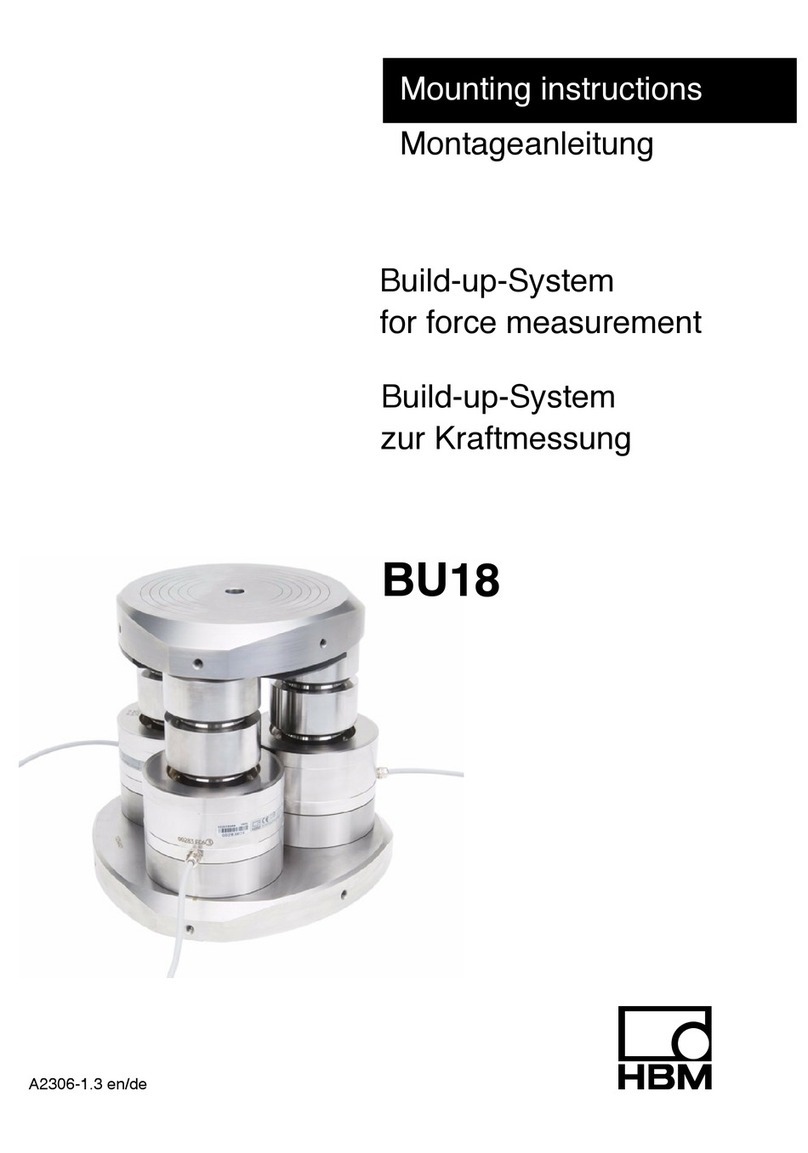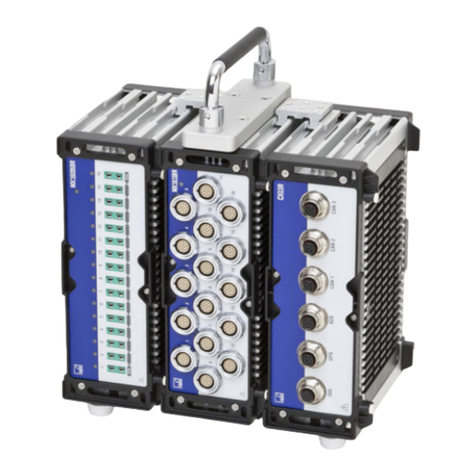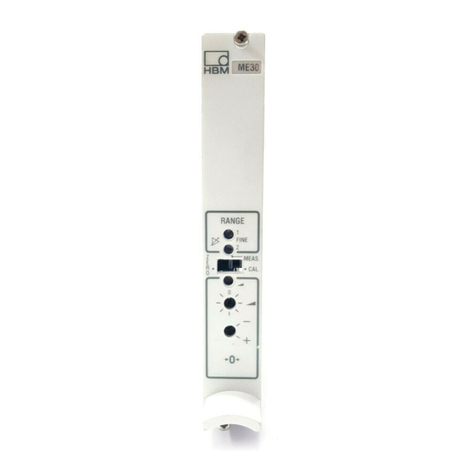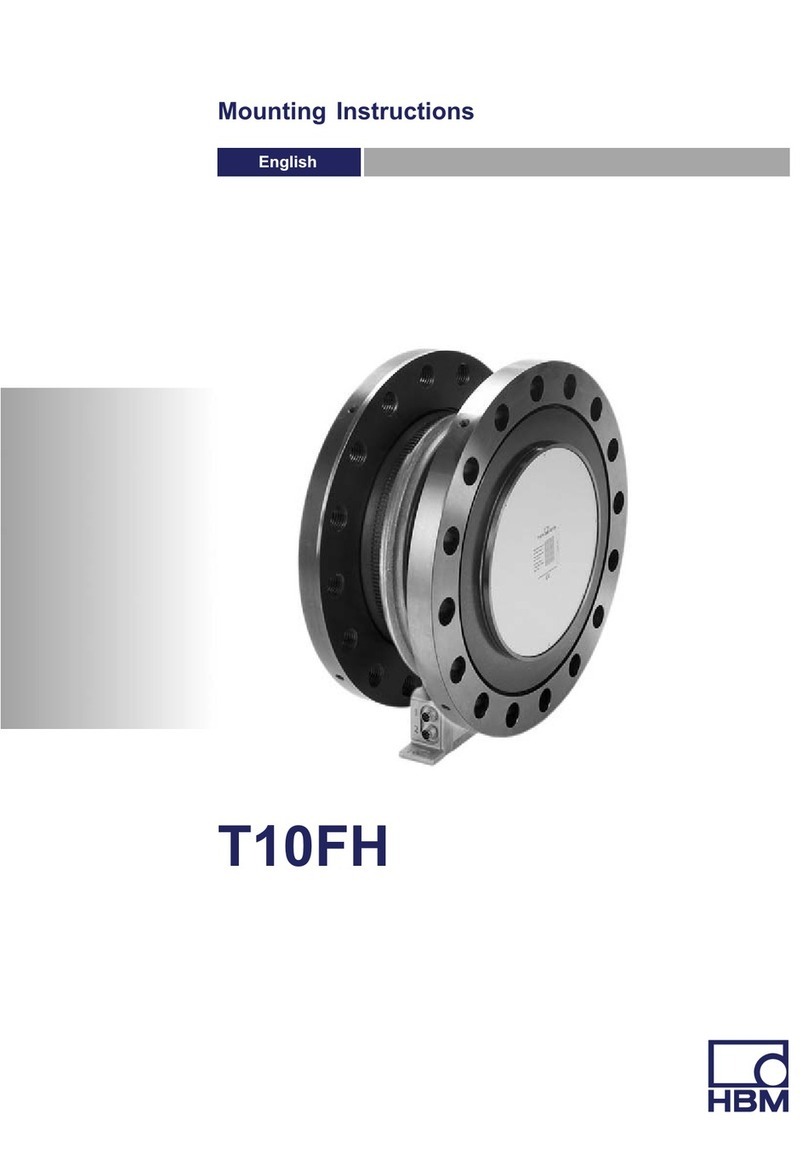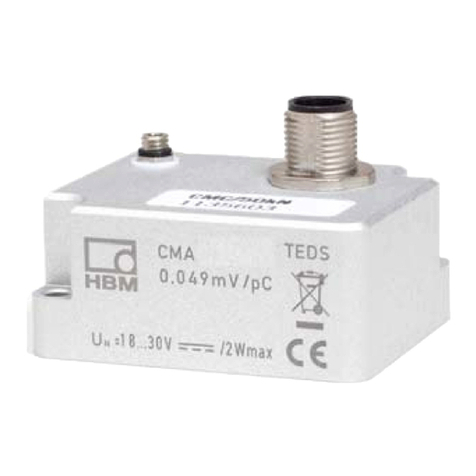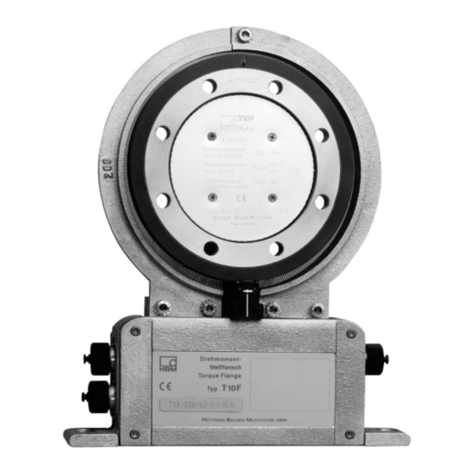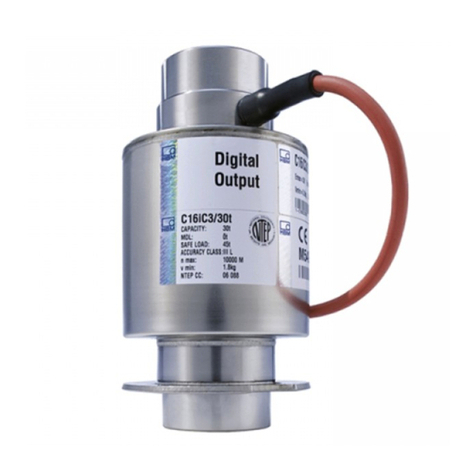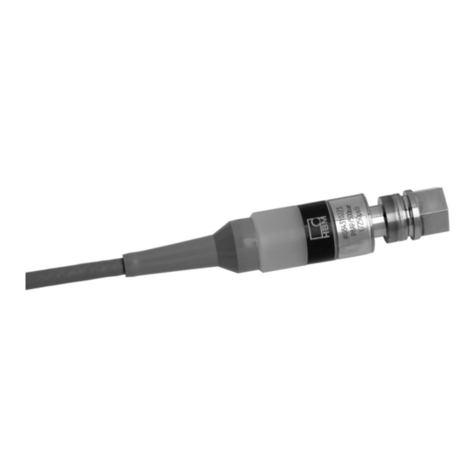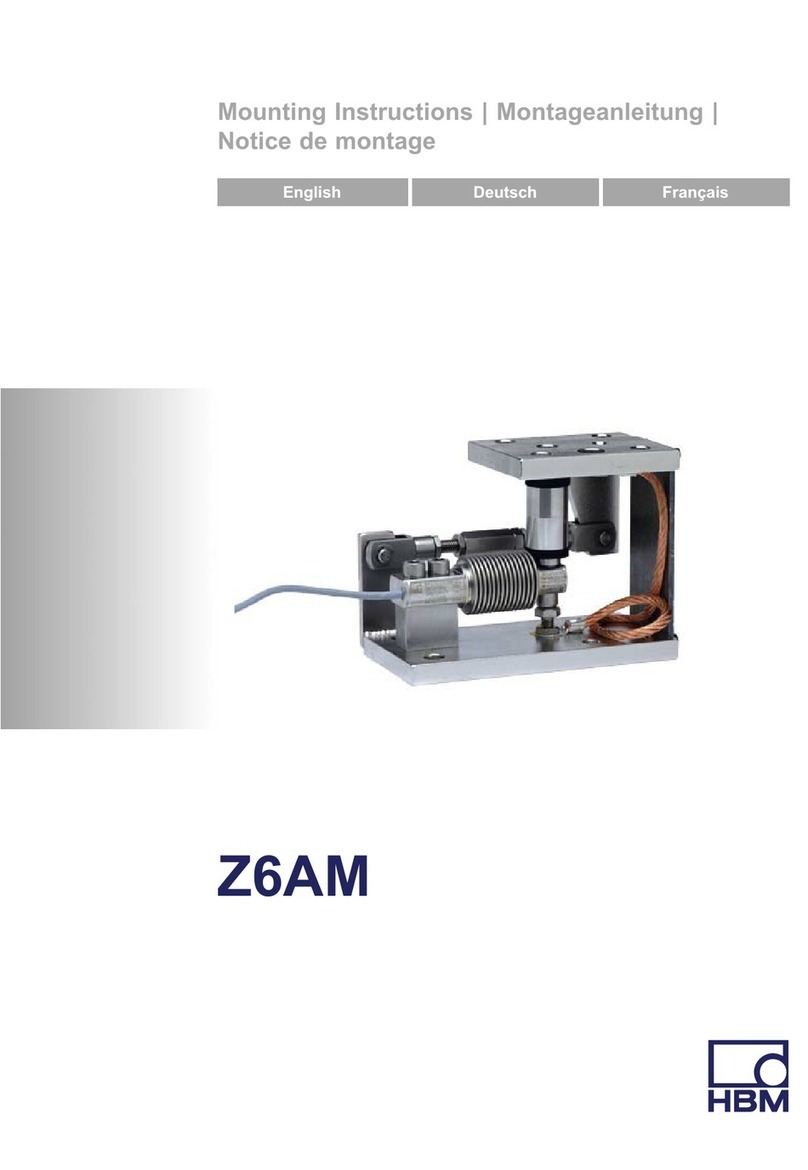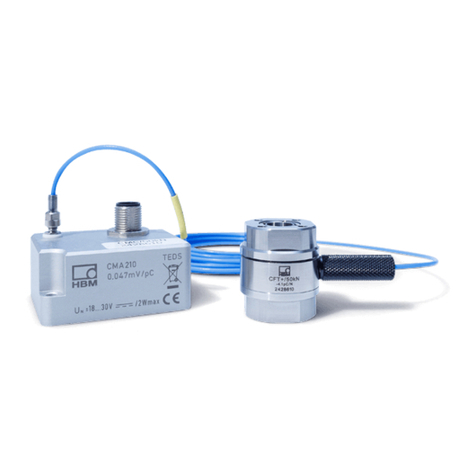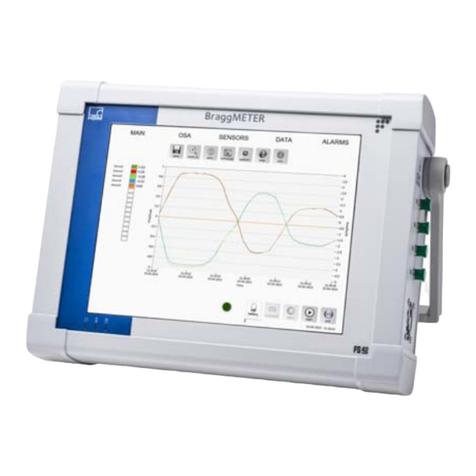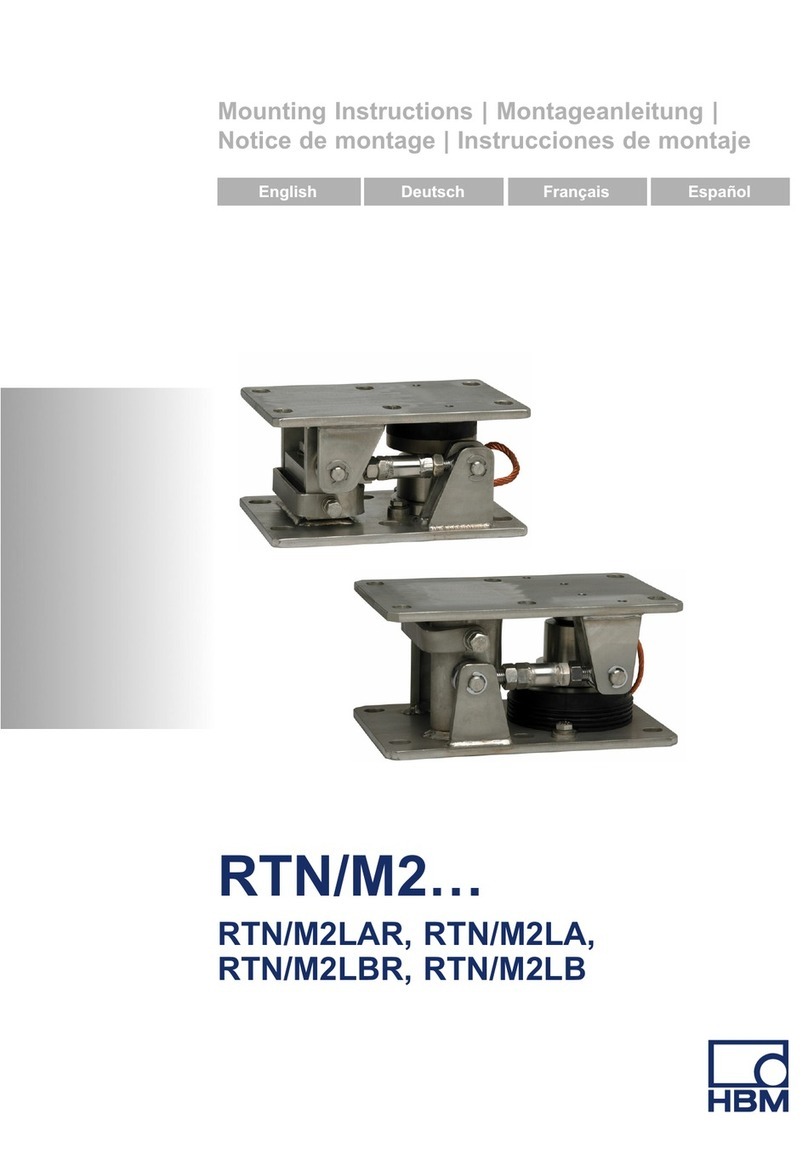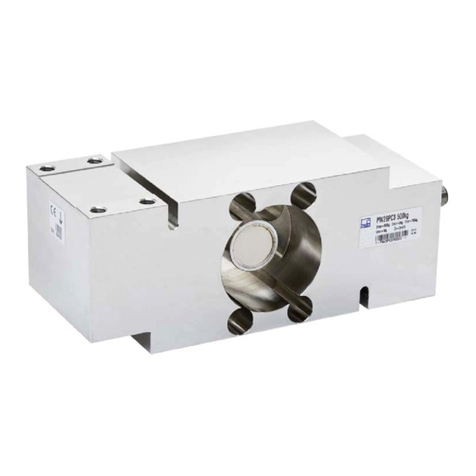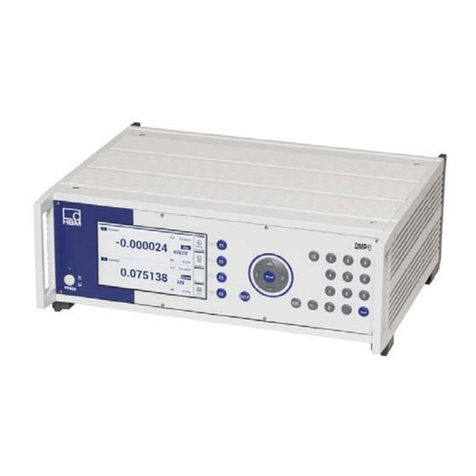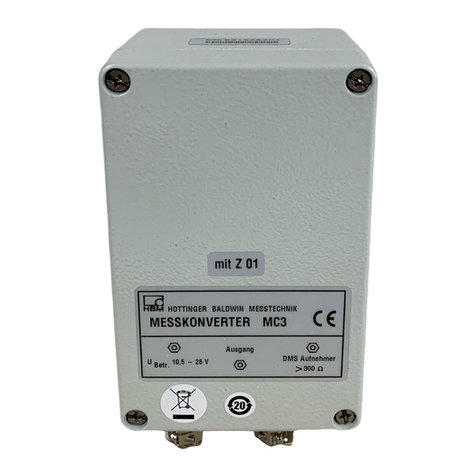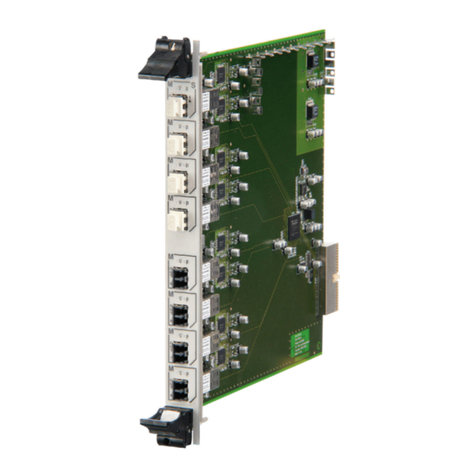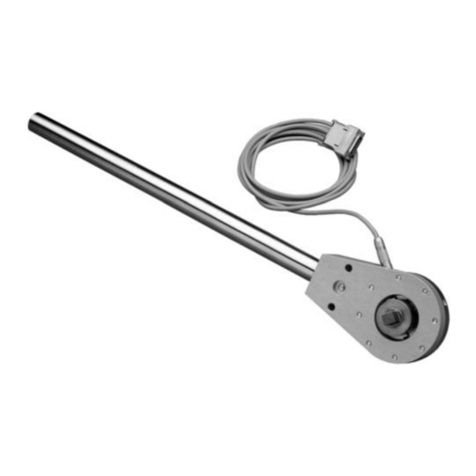
Safety instructions
C15 A05091_01_YCI_02 HBM: public 5
Use as machine elements
Force transducers can be used as machine elements. When used in this man
ner, it must be noted that, to favor greater sensitivity, the force transducers
were not designed with the safety factors usual in mechanical engineering.
Please refer to the “Load-carrying capacity limits” section and the specifica
tions.
Accident prevention
The prevailing accident prevention regulations must be taken into account,
even though the breaking force is well in excess of the full scale value. This
applies in particular to transportation and mounting.
Additional safety precautions
Force transducers cannot (as passive transducers) implement any (safety-rele
vant) cutoffs. This requires additional components and constructive measures,
for which the installer and operator of the plant is responsible.
In cases where a breakage or malfunction of the force transducer would cause
injury to persons or damage to property,the user must take appropriate addi
tional safety precautions that at least meet the requirements of applicable acci
dent prevention regulations (e.g. automatic emergency shutdown, overload
protection, catch straps or chains, and other fall protection).
The electronic processor that processes the measurement signal should be
designed so that failure of the measurement signal cannot lead to secondary
failures.
General dangers of failing to follow the safety instructions
Force transducers are state-of-the-art and failsafe. Transducers can be dan
gerous if installed, set up, started up or operated incorrectly or by untrained
personnel. Every person involved in setting up, starting up, operating or re
pairing a force transducer must have read and understood the installation man
ual and the technical safety instructions in particular.
Force transducers can be damaged or destroyed if used for other purposes
than their intended use or by non-compliance with the installation and user’s
manual, these safety instructions or other applicable safety regulations (acci
dent prevention regulations from the Employers' Liability Insurance Associa












